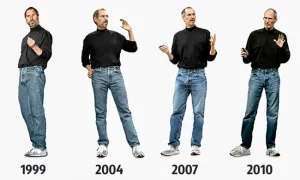
Ever wondered why, despite being a billionaire, Steve Jobs wore the same clothes every day?
Decision fatigue happens when we become mentally drained from making too many decisions. It’s well-known in business and technology; but isn’t often discussed in healthcare, even though doctors, nurses, and other medical staff make countless decisions every day.
An article in the Journal of Health Psychology Pignatiello et al. (2020), highlights this issue, showing how decision fatigue affects healthcare workers.
Researchers found three main causes of decision fatigue:
- Too many choices or complex decisions.
- Lack of mental energy due to self-control issues.
- Stressful environments and heavy workloads.
Decision fatigue leads to three main effects:
- Poor decisions or procrastination.
- Trouble thinking clearly.
- Physical exhaustion or feeling overwhelmed.
A key step in tackling decision fatigue is using tools like the one developed by Hickman et al. (2018), which helps identify when it occurs. This can lead to better strategies for managing it.
Some ways to reduce decision fatigue include:
- Reduce decisions: Use guidelines or checklists to simplify choices.
- Spread out decisions: Take breaks and avoid tough decisions when exhausted. Hard decisions are often best made in the morning.
- Improve self-care: Get enough sleep, eat well, and manage stress.
- Adjust work schedules: Balance workloads to prevent burnout.
Even Steve Jobs kept his wardrobe simple to avoid wasting mental energy on small decisions. By applying similar ideas, healthcare workers can reduce decision fatigue and improve their well-being.

